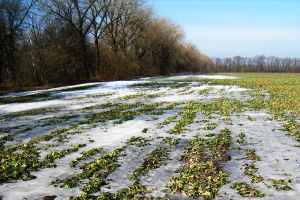USDA figures push down grain prices

Global grain markets slumped over the Bank Holiday weekend, following a surprisingly bearish report by the US Department of Agriculture (USDA).
Released late on Thursday afternoon (28 March), the quarterly stocks report revealed much higher US maize stocks than expected, triggering a sharp fall in Chicago futures prices. The plantings report was similarly bearish for new crop values, predicting a 39m hectares (97.3m-acre) maize crop – the largest area since 1936.
“The stocks report was a real surprise to the market,” said Jonathan Lane, trading manager at Gleadell Agriculture. “To see the old crop stocks jump so sharply, and new crop stocks-to-use ratio recovering really wasn’t expected. If these numbers turn out to be correct, we would expect maize to return to a significant discount to wheat, which hasn’t been seen for some time.”
London’s November wheat futures fell by £5.25/t in reaction to the report, to around £184/t, with old crop values down by £6/t to £198/t by midday on Tuesday (2 April). “However, the EU has no more wheat now than we had before the report came out,” said Mr Lane. “Using a new crop story for old crop wheat to collapse – I just can’t see it working in the medium term.”
But if the larger US maize plantings did translate into higher production, it would be very bearish for new crop markets. “It is the last thing we need, with UK crops looking as they are – it could be a perfect storm for our farmers, of poor crops and poor prices together.”
Rapeseed values followed global markets lower on Thursday, before recovering slightly today, to the equivalent of about £358/t ex-farm for November. The USDA’s soyabean stock estimate was higher than expected, but new crop plantings were surprisingly low, at 31m hectares (77.1m acres).
Meanwhile, the latest HGCA/ADAS crop report for the UK revealed the impact of the poor autumn and winter weather. Farmers had planted only 70-75% of the intended winter wheat area, with winter barley plantings down by 10-25%, it said. Although winter rapeseed plantings were similar to last year’s, about 20% may have to be replanted. Cold weather meant spring drilling was delayed, with only 15% sown by the end of March compared to 50% in a more normal year.











